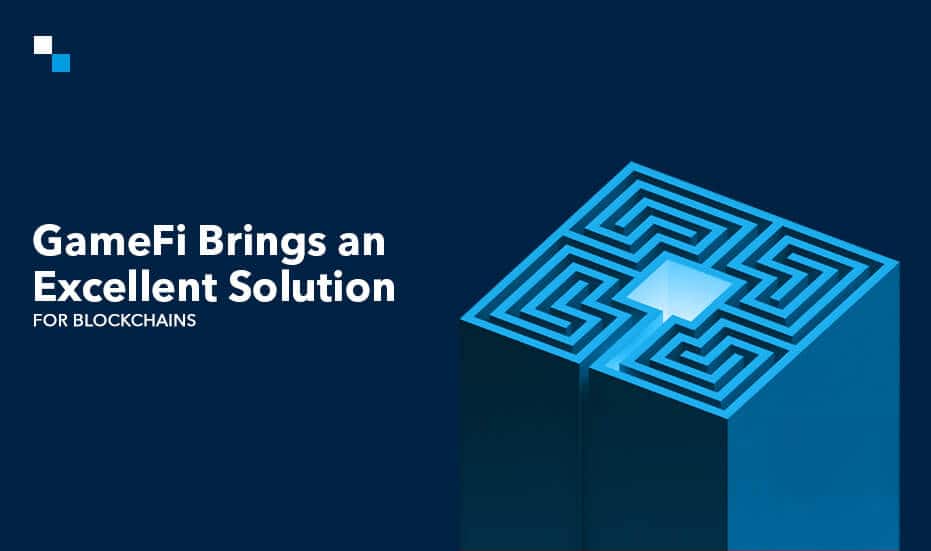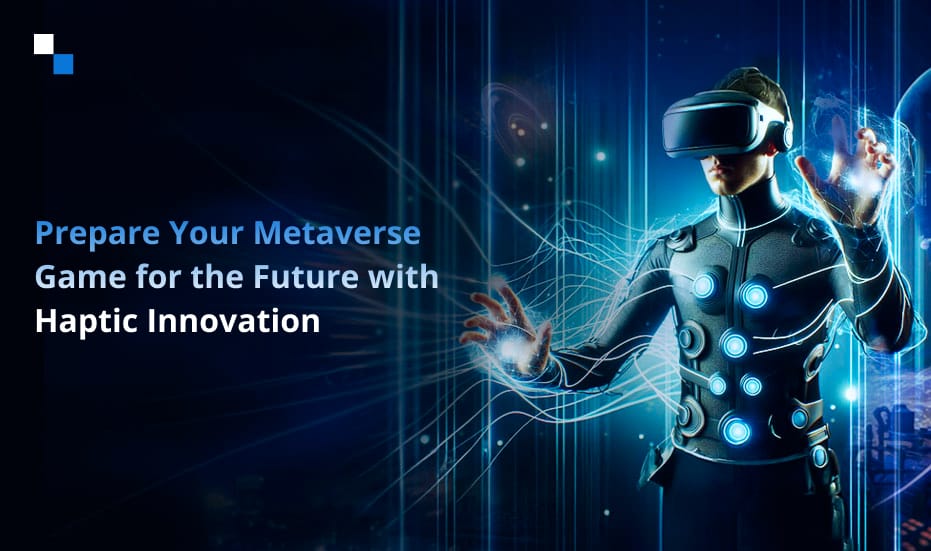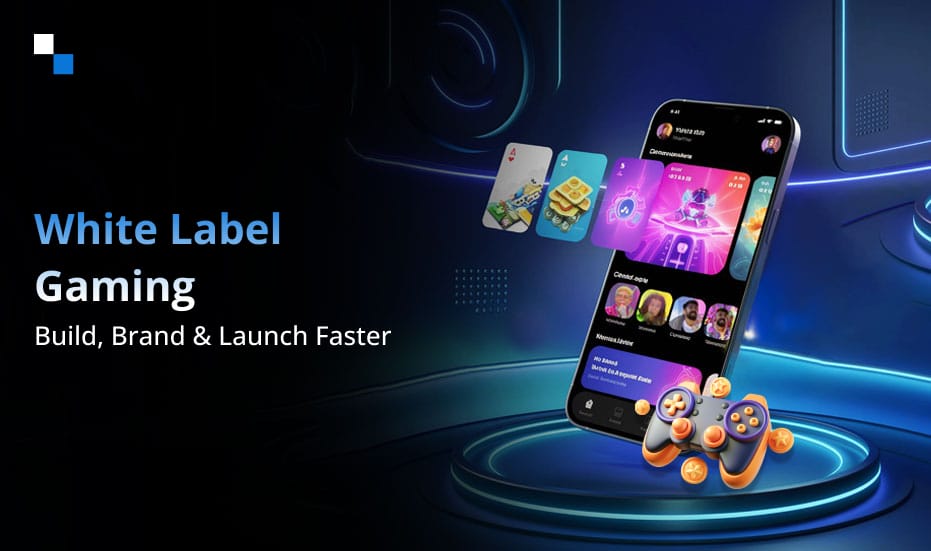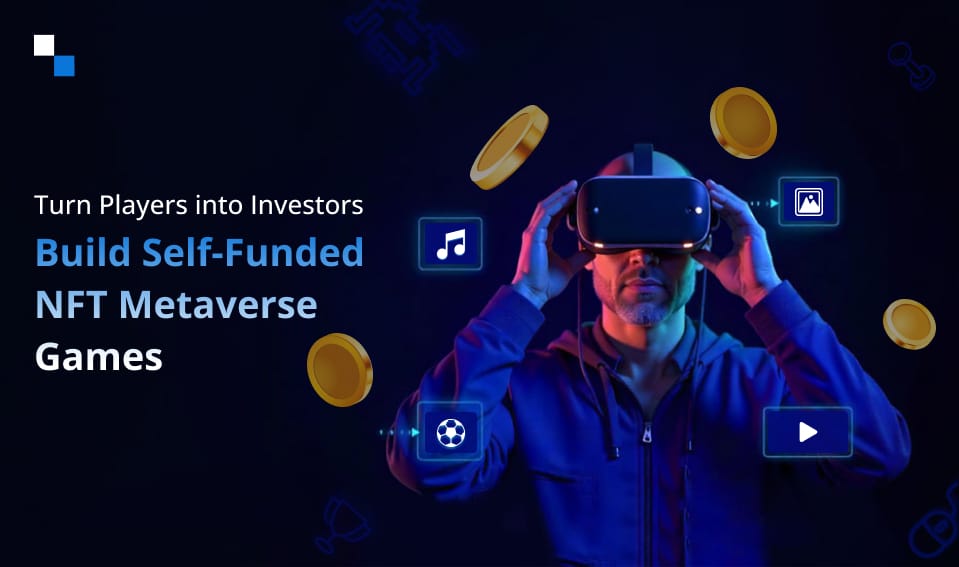Blockchain technology has revolutionised the digital world, opening new pathways for decentralised finance (DeFi), secure transactions, and innovative applications across various sectors. However, like any other technology, it comes with its own set of challenges. These include issues like scalability, user adoption, high transaction fees, and security vulnerabilities. One of the most significant solutions to these challenges has emerged from a seemingly unlikely corner of the blockchain world— GameFi.
GameFi , short for gaming finance, is the intersection of blockchain-based games and decentralized finance, offering unique and engaging ways to integrate financial systems within gaming ecosystems. With the help of GameFi, many of the existing limitations in blockchain technology are being tackled head-on. Below, we explore how GameFi offers solutions to the major challenges faced by blockchains, transforming the landscape of decentralized applications and paving the way for a new era of digital economies.
How GameFi Enhances Key Blockchain Indicators
1. User Growth and Retention
- Number of Users/Players
One of the primary ways GameFi enhances blockchain ecosystems is by driving user growth. The Play-to-Earn (P2E) model is particularly effective, attracting players who are not only looking for entertainment but also seeking financial rewards. As users engage with these platforms to earn tokens and NFTs, the overall number of players rises significantly. This organic growth is powered by the allure of financial gain, making GameFi a compelling option for users across the globe. - Daily Unique Visitors (DUV)
The introduction of daily rewards, quests, and community-driven events keeps players coming back consistently, thus increasing the number of Daily Unique Visitors (DUV). In blockchain gaming, the ability to earn rewards by simply logging in or completing tasks ensures a steady stream of visitors. This rise in DUV reflects a high level of ongoing interest, crucial for maintaining long-term engagement and ensuring ecosystem vibrancy. - DUV Growth Rate
GameFi ecosystems also see significant growth in their DUV Growth Rate. Gamified referral programs, where users earn tokens for bringing in new players, create a viral effect. Special events and competitive tournaments add further incentive for players to engage regularly, contributing to faster user growth over time. With more users joining daily, GameFi platforms can maintain a robust and expanding player base. - User Retention Rate
Unlike traditional games where users may lose interest after a few months, GameFi has the advantage of financial incentives to retain users over longer periods. Through staking, NFT ownership, and community governance features, players have more reasons to stay engaged. As users continue to play, the financial rewards accumulate, motivating them to maintain regular interaction. As a result, the retention rate of players in GameFi is notably higher than in non-blockchain games.
2. Financial Metrics
- Transaction Volume Per Capita
In traditional games, in-game purchases are often limited to cosmetic items. However, GameFi enhances the transaction volume per capita by integrating DeFi elements, enabling users to buy, sell, and trade valuable assets frequently. This increased trading activity boosts the overall volume of blockchain transactions, adding liquidity and driving up on-chain activity. - Fees on In-Game Purchases
One significant benefit of blockchain gaming is the reduction in fees on in-game purchases. Traditional platforms often charge high fees on microtransactions, which can discourage users from buying in-game items. GameFi, by contrast, often operates on blockchains with lower fees, incentivizing users to engage more frequently in trades and purchases. - Average Revenue Per User (ARPU)
GameFi ecosystems also improve the Average Revenue Per User (ARPU) by offering multiple revenue streams, such as staking, asset lending, and liquidity mining. Players not only earn tokens by participating in games but can also leverage these assets to generate passive income, thus increasing their overall earnings. This makes GameFi a lucrative platform for both casual and dedicated players, driving up the ARPU significantly. - Value of Digital Assets Within the Game
The rarity and ownership of in-game digital assets in the form of NFTs add considerable value to the GameFi ecosystem. These digital assets can appreciate over time, especially if they have utility across different platforms or games. Blockchain technology ensures that ownership is transparent and verifiable, making these assets not just collectibles but also tradable commodities that hold real-world value.
3. Engagement Metrics
- Average Time Spent by Users in the Game
GameFi platforms excel at increasing the average time spent by users. Incentivized daily quests, competitions, and staking mechanics encourage players to invest more time in the game. By rewarding users for longer gameplay, these platforms naturally drive higher levels of engagement. - Player Habits and Motivations
The economic incentives in GameFi shift traditional player motivations. Instead of playing solely for entertainment, players are driven by the potential for financial gain. This leads to a deeper, more strategic engagement, as users actively seek ways to optimize their time and resources for maximum rewards. These changing habits make GameFi players more loyal and long-term participants.
Harness the Power of GameFi for your Blockchain Project
Schedule Free Demo4. Market Performance
- Token Price and Market Capitalization
GameFi platforms generate token price appreciation as more players enter the ecosystem and demand for in-game tokens grows. This demand directly impacts market capitalization, as higher utility and adoption of these tokens lead to increased trading volumes and value. Players use tokens for various in-game activities, from governance to staking, which further solidifies the token’s utility and market presence. - Secondary Market Activity for In-Game Assets
GameFi’s integration of NFTs has spurred active secondary market activity for in-game assets. Players often trade their NFTs on decentralized marketplaces, increasing the liquidity and value of these digital items. This adds a new dimension to the in-game economy, where assets hold significant value beyond their original use.
5. Technical Metrics
- Transaction Speed and Efficiency
GameFi platforms that use Layer 2 solutions or sidechains can dramatically improve transaction speed and efficiency. Players can enjoy fast transactions with minimal latency, essential for smooth gameplay and a seamless user experience. This efficiency also reduces network congestion, benefiting the broader blockchain ecosystem. - Gas Fees
High gas fees have been a barrier to mass adoption in some blockchain applications, but GameFi platforms are increasingly adopting low-fee blockchains or sidechain solutions to mitigate these costs. Optimized smart contracts further reduce transaction fees, making the ecosystem more accessible and cost-effective for players.
6. Community Metrics
- Social Media Engagement and Growth
GameFi projects leverage social media to build communities and drive engagement. Players are incentivized to share achievements, invite friends, and participate in online challenges. This creates a viral loop of user-generated content, further boosting awareness and growth across platforms like Twitter, Discord, and Telegram. - Community Activity on Forums and Discussion Platforms
With decentralized governance mechanisms in place, GameFi communities are highly active on forums and discussion platforms. Players can vote on governance proposals, contribute ideas for game development, and participate in discussions about future updates. This active participation strengthens community bonds and drives continuous improvement of the platform.
7. Development Activity
- Frequency of Updates and Patches
Frequent updates are crucial for keeping players engaged. GameFi platforms that consistently roll out new updates, features, and patches demonstrate a commitment to long-term success. Regular updates not only address bugs but also introduce fresh content, keeping the game exciting and relevant for players. - Implementation of Player Feedback
The decentralized nature of GameFi allows for quicker implementation of player feedback. Through community voting and governance tokens, players can propose and influence new game mechanics, ensuring that the game evolves according to user preferences. This strengthens the relationship between developers and the community.
8. Security
- Incidents of Hacks or Exploits
Blockchain technology enhances security in GameFi ecosystems. Decentralized networks, combined with regular audits and bug bounty programs, help to minimize the risk of hacks or exploits. By maintaining transparency and security, GameFi platforms foster trust and long-term engagement.
9. Tokenomics
- Token Distribution
Fair and transparent token distribution is critical to the success of any GameFi platform. Well-designed tokenomics ensure that early adopters, developers, and new players are all rewarded proportionally. Staking mechanisms and inflation models help maintain the token’s value and incentivize continued participation. - Governance Participation
Decentralized governance models give players an active role in shaping the future of the game. Through governance tokens, users can vote on important decisions like game mechanics, token distribution, and platform updates. This democratization fosters a sense of ownership and accountability within the community.
10. Ecosystem Growth
- Partnerships and Integrations
GameFi projects can expand their ecosystems by forming partnerships with DeFi platforms, NFT marketplaces, or other blockchain protocols. These integrations provide additional utility for players, such as the ability to use in-game assets across multiple platforms or financial systems. - Cross-Chain Interoperability
The future of GameFi lies in cross-chain interoperability, where players can seamlessly transfer assets between different blockchain networks. By enabling users to use their tokens and NFTs across various games and platforms, GameFi enhances the scalability and interconnectedness of its ecosystem.
Advantages of GameFi
1. Scalability: The Path to More Efficient Blockchains
One of the most critical challenges in blockchain technology is scalability. Traditional blockchain networks, like Ethereum and Bitcoin, struggle to handle a large number of transactions simultaneously, resulting in network congestion and slower transaction times. This limitation is especially problematic for games that require rapid transaction speeds to maintain smooth gameplay experiences.
GameFi projects have begun addressing this issue by leveraging layer-2 solutions and sidechains. Layer-2 solutions allow for transactions to take place off the main chain, reducing congestion and improving transaction speed. Many blockchain-based games are utilizing sidechains, such as the Polygon network, which offloads transactions from the primary chain to improve efficiency. As a result, GameFi applications are helping the blockchain ecosystem scale more efficiently, allowing for a larger user base and faster interactions.
Additionally, sharding — a method of partitioning a blockchain network into smaller, more manageable pieces—is being increasingly employed in GameFi ecosystems. By distributing the data across different nodes, sharding enhances the speed and capacity of blockchains, which is critical for seamless gameplay in blockchain-based games.
2. Enhancing User Adoption Through Gamification
Another significant hurdle for blockchains is user adoption. While blockchain technology offers numerous benefits, its complexity can deter the average user. Wallet setups, private keys, and understanding decentralized exchanges can be overwhelming, particularly for those unfamiliar with the technology.
GameFi addresses this problem by offering a user-friendly introduction to the world of blockchain. Through gamification, GameFi platforms simplify the learning curve associated with blockchain technology. Players engage with blockchain-based elements in ways that feel natural and intuitive. For example, a player may earn in-game tokens without ever realizing they are interacting with a decentralized financial system.
The fun and interactive nature of GameFi has accelerated the mass adoption of blockchain technology. By allowing players to earn cryptocurrency and non-fungible tokens (NFTs) as rewards for gameplay, users are incentivized to engage with decentralized technologies. This process builds familiarity and trust in blockchain applications, ultimately increasing blockchain adoption among the broader population.
Get Obligation Free Quote
[widget id=”custom_html-3″]
3. Lowering Transaction Costs with Efficient Mechanisms
One of the main obstacles for blockchain networks, particularly in Ethereum-based systems, is the high transaction fees. As the number of users on a network increases, so does the cost of making a transaction. This can make it prohibitively expensive for users to participate, especially in ecosystems that rely on microtransactions, like many blockchain games.
GameFi offers a solution to this through the implementation of efficient transaction mechanisms. Some GameFi platforms utilize low-fee blockchains like Binance Smart Chain (BSC) and Solana, which offer lower gas fees compared to traditional blockchains like Ethereum. By doing so, GameFi allows players to interact with blockchain ecosystems without the burden of high transaction costs.
Additionally, many GameFi platforms are developing in-game economies that operate using their own native tokens, which reduces the need for frequent interactions with external blockchains. These closed-loop systems lower the necessity for costly cross-chain transactions, keeping fees low for users while maintaining the benefits of blockchain technology.
4. Boosting Security in Blockchain Ecosystems
Security remains a top concern in blockchain development, especially with the rise of smart contract vulnerabilities and hacks. While decentralized systems offer inherent security advantages, they are not immune to exploits, particularly when dealing with valuable assets like cryptocurrencies and NFTs.
GameFi platforms are actively addressing these concerns by integrating robust security features into their games. Many GameFi developers utilize audited smart contracts to minimize vulnerabilities and ensure that the underlying code is secure. Additionally, GameFi ecosystems often adopt multi-signature wallets and decentralized autonomous organizations (DAOs) for better governance and security.
The emphasis on security within GameFi is not just for the developers; it extends to the players as well. By educating users about proper security practices—such as safeguarding private keys and recognizing phishing attempts—GameFi helps to cultivate a security-conscious user base that is less susceptible to common blockchain-related scams.
5. Decentralized Ownership and Play-to-Earn Models
The traditional gaming industry is often characterized by centralized control, where game developers hold full authority over the game’s assets, economy, and rules. Blockchain and GameFi, however, introduce the concept of decentralized ownership through NFTs and play-to-earn (P2E) models. These innovations are transforming the way users interact with and invest in digital assets.
In GameFi, players can truly own in-game assets, such as skins, weapons, and characters, in the form of NFTs. This ownership is immutable and independent of the game developer’s control. As a result, players are empowered to buy, sell, or trade their assets freely on decentralized marketplaces.
Furthermore, the play-to-earn model incentivizes players by allowing them to earn real-world value through their gameplay. By accumulating tokens or valuable NFTs, users can generate income, which has drawn millions of new users to the blockchain ecosystem. This decentralized economic model also opens up new opportunities for game developers to create more engaging, community-driven experiences.
The Future of GameFi and Blockchain Synergy
As GameFi continues to mature, its influence on the broader blockchain ecosystem will only grow stronger. By addressing key challenges like scalability, high transaction fees, and user adoption, GameFi provides a valuable solution to many of the obstacles that have historically hindered blockchain’s progress.
The integration of finance and gaming is not just a fleeting trend; it represents the future of decentralized economies and blockchain applications. As blockchain technology evolves, GameFi will play an increasingly important role in facilitating its widespread adoption and success.
Conclusion
GameFi is not just a trend but a pivotal force driving the next phase of blockchain innovation. By merging gaming with decentralized finance, GameFi projects are reshaping how users interact with blockchain ecosystems, enhancing key indicators such as user growth, transaction volume, and market capitalization. The seamless integration of NFTs, DeFi, and tokenomics within games is creating new opportunities for players and developers alike, ensuring long-term engagement and financial rewards. As GameFi continues to evolve, its influence on blockchain technology will only expand, making it an essential part of the ecosystem’s growth and sustainability.





